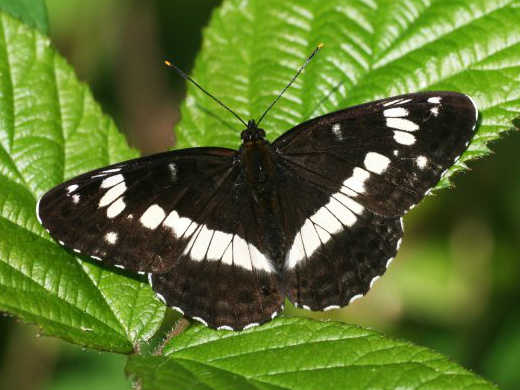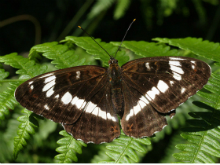
Declining in woodland


Distribution and Status
In the 1980s the White Admiral occurred in a number of the larger woods in Hertfordshire like the Broxbourne Woods complex and in the west, Bricket Wood Common and the Ashridge area near Tring. By end of the 1990s however, many of the colonies in the west of the county died out and the main colonies were now in the Broxbourne area. Reports were now coming from the Ruislip Woods complex in Middlesex. The 2000s, perhaps aided by the warmer summers in 2003 and 2006, brought about a small expansion of this species so that it is now seen in more tetrads in Hertfordshire as well as in north-west Middlesex. However, the last few years have seen a worrying decline although 2022 saw a welcome significant increase in range and abundance.
Habitat Requirements
Deciduous woodlands where its hostplant Honeysuckle Lonicera periclymenum grows in shady situations but sunlit rides are required for males establishing territories
Larval Foodplants
Honeysuckle Lonicera periclymenum
Adult Food Sources
Bramble Rubus fruticosus agg., Buddleia Buddleja davidii, Alder Buckthorn Frangula alnus. Ergot (fungus), Ground/mud/road surface
Behaviour/Observation notes
Although the White Admiral spends some time in the tree canopy like the Purple Emperor, males often fly at lower levels in sunlit rides. Both sexes will occasionally come down to feed. If you know where to find the butterfly, with some patience you may be lucky to find it basking or feeding on flowering brambles with its wings wide open to provide good photographic opportunities

Life History
Usually only one generation a year is produced with emergence from the middle of June until the end of July. A partial second brood is sometimes produced in warm summers as in 2006. Females lay eggs singly on the upperside of a honeysuckle leaf in slightly shady situations. Larvae feed on the tip and sides of a midrib of a leaf before forming a hibernaculum for the winter. Feeding is resumed in the spring. When fully grown, a pupa is formed suspended from a leaf or stem
Further information
Photo gallery
Branch Annual Report (2022)
More on life cycle and status
UK distribution map
Full list of larval hostplants (Nymphalidae)
Stevenage butterflies - additional notes